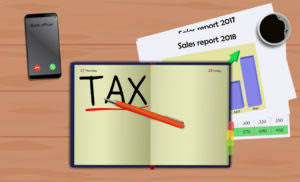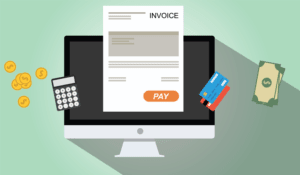Answer the following questions on closing entries and rate your confidence to check your answer. We have completed the first two columns and now we have the final column which represents the closing (or archive) process. All accounts can be classified as either permanent (real) or temporary (nominal) (Figure 5.3).
Step 2: Transfer Expenses
The first part is the date ofdeclaration, which creates the obligation or liability to pay thedividend. The second part is the date of record that determines whoreceives the dividends, and the third part is the date of payment,which is the date that payments are made. Printing Plus has $100 ofdividends https://www.bookkeeping-reviews.com/ with a debit balance on the adjusted trial balance. Theclosing entry will credit Dividends and debit RetainedEarnings. Thebalance in the Income Summary account equals the net income or lossfor the period. We see from the adjusted trial balance that our revenue account has a credit balance.
Step 5: Running reports
Rohan has a focus in particular on consumer and business services transactions and operational growth. Rohan has also worked at Evercore, where he also spent time in private equity advisory. Shaun Conrad is a Certified Public Accountant and CPA exam expert with a passion for teaching.
Movement on the Retained Earnings Account
The goal is to make the posted balance of the retained earnings account match what we reported on the statement of retained earnings and start the next period with a zero balance for all temporary accounts. This is no different from what will happen to a company at theend of an accounting period. A company will see its revenue andexpense accounts set back to zero, but its assets and liabilitieswill maintain a balance. In summary, the accountant resets thetemporary accounts to zero by transferring the balances topermanent accounts. It is permanent because it is not closed at the end of each accounting period.
Step #2: Close Expense Accounts
- All accounts can be classified as either permanent (real) or temporary (nominal) (Figure 5.3).
- Closing entries are the journal entries used at the end of an accounting period.
- That’s exactly what we will be answering in this guide – along with the basics of properly creating closing entries for your small business accounting.
- The goal is to make the posted balance of the retained earnings account match what we reported on the statement of retained earnings and start the next period with a zero balance for all temporary accounts.
- It is a holding account for revenues and expenses before they are transferred to the retained earnings account.
- Closing journal entries are used at the end of the accounting cycle to close the temporary accounts for the accounting period, and transfer the balances to the retained earnings account.
Just like in step 1, we will use Income Summary as theoffset account but this time we will debit income summary. Thetotal debit to income summary should match total expenses from theincome statement. The total debit to income summary should match total expenses from the income statement. The first entry closes revenue accounts to the Income Summary account. The second entry closes expense accounts to the Income Summary account. The third entry closes the Income Summary account to Retained Earnings.
The closing entries are the last journal entries that get posted to the ledger. In this example we will close Paul’s Guitar Shop, Inc.’s temporary accounts using the income summary account method from his financial statements in the previous example. As part of the closing entry process, the net income (NI) is moved into retained earnings on the balance sheet. The assumption is that all income from the company in one year is held onto for future use.
Prior to joining Ion Pacific, Kevin was a Vice President at Accordion Partners, a consulting firm that works with management teams at portfolio companies of leading private equity firms. The abbreviation REID makes it simple to recall which accounts need to be closed and how they are completed. Revenue, Expense, Income Summary, and Dividend are referred to as REID.
The first entry requires revenue accounts close to the IncomeSummary account. Notice that the effect of this closing journal entry is to credit the retained earnings account with the amount of 1,400 representing the net income (revenue – expenses) of the business for the accounting period. Since dividend and withdrawal accounts are not income statement accounts, they do not typically use the income summary account. These accounts are closed directly to retained earnings by recording a credit to the dividend account and a debit to retained earnings. Closing entries are journal entries made at the end of an accounting period, that transfer temporary account balances into a permanent account. It is also possible to bypass the income summary account and simply shift the balances in all temporary accounts directly into the retained earnings account at the end of the accounting period.
On the statement of retained earnings, we reported theending balance of retained earnings to be $15,190. We need to dothe closing entries to make them match and zero out the temporaryaccounts. A net loss would decrease retained earnings so we would do the opposite in this journal entry by debiting Retained Earnings and crediting Income Summary. Our discussion here begins with journalizing and posting the closing entries (Figure 5.2). These posted entries will then translate into a post-closing trial balance, which is a trial balance that is prepared after all of the closing entries have been recorded.
It effortlessly sifts through large amounts of data and generates closing entries automatically. This ensures that your financial operations infrastructure can scale with your business’s growth. With the use of modern accounting software, this process often takes place automatically.
You might be asking yourself, “is the Income Summary accounteven necessary? ” Could we just close out revenues and expensesdirectly into retained earnings and not have this extra temporaryaccount? We could do this, but by having the Income Summaryaccount, you get a balance for net income a second time. This givesyou the balance to compare to the income statement, and allows youto double check that all income statement accounts are closed andhave correct amounts. If you put the revenues and expenses directlyinto retained earnings, you will not see that check figure.
This is an optional step in the accounting cycle that you will learn about in future courses. Steps 1 through 4 were covered in Analyzing and Recording Transactions and Steps 5 through 7 were covered in The Adjustment Process. The month-end close is when a business collects financial accounting information.
As a corresponding entry, you will credit the income summary account, which we mentioned earlier. What is the current book value of your electronics, car, and furniture? Are the value of your assets and liabilities now zero because of the start of a new year? Your car, electronics, and furniture did not suddenly lose all their value, and unfortunately, you still have outstanding debt. Therefore, these accounts still have a balance in the new year, because they are not closed, and the balances are carried forward from December 31 to January 1 to start the new annual accounting period. At the end of a financial period, businesses will go through the process of detailing their revenue and expenses.
Closing entries prepare a company for the next accounting period by clearing any outstanding balances in certain accounts that should not transfer over to the next period. Closing, or clearing the balances, means returning the account to a zero balance. Having a zero balance in these accounts is important so a company can compare performance across periods, particularly with income.
In this example, it is assumed that there is just one expense account. Notice that the balances in interest revenue and service revenueare now zero and are ready to accumulate revenues in the nextperiod. The Income Summary account has a credit balance of $10,240(the revenue sum). These permanent accounts form the foundation of your business’s balance sheet.
To find the Expenses, just like for Revenue, you would also find it in the Income Statement. The expenses would be listed in the expense section, so you would need to find the total costs. The income Statement, also known as the Profit or Loss statement, is one of the 3 Main Financial Statements that every accountant and company globally uses. It shows the Revenue, Expenses, and, most importantly, the Net Income the company generated during the fiscal year. Mr. Arora is an experienced private equity investment professional, with experience working across multiple markets.
Nomatter which way you choose to close, the same final balance is inretained earnings. Although it is not an income statement account, the dividend account is also a temporary account and needs a closing journal entry to zero the balance for the next accounting period. If a company’s revenues are greater than its expenses, the closing entry entails debiting income summary and crediting retained earnings. In the event of a loss for the period, the income summary account needs to be credited and retained earnings reduced through a debit. In order to close out your expense accounts, you will need to debit the income summary account, and credit each line item expense listed in the trial balance, which reduces the expense account balances to zero. To begin, you want to run an adjusted trial balance, which is used to prepare your closing entries, moving both the revenue and the expense account balances, as well as drawing account and/or dividend account balances.
It isimportant to understand retained earnings is not closed out, it is only updated. RetainedEarnings is the only account that appears in the closing entriesthat does not close. You should recall from your previous materialthat retained earnings are the earnings retained by the companyover time—not cash flow but earnings.
Dividends are payments by corporations to the shareholders using the extra profits they have generated during the fiscal year. Each year the dividends could be different as the number of profits the business generates could differ depending on how the industry did. My Accounting Course is a world-class educational resource developed by experts to simplify accounting, finance, & investment analysis topics, so students and professionals can learn and propel their careers.
Closing entries transfer the balances from the temporary accounts to a permanent or real account at the end of the accounting year. The next day, January 1, 2019, you get ready for work, but before you go to the office, you decide to review your financials for 2019. What are your total expenses for rent, electricity, cable and internet, gas, and food for the current year? You have also not incurred any expenses yet for rent, electricity, cable, internet, gas or food.
What is the current book value ofyour electronics, car, and furniture? Are the value of your assets andliabilities now zero because of the start of a new year? Your car,electronics, and furniture did not suddenly lose all their value,and unfortunately, you still have outstanding debt. Therefore,these accounts still have a balance in the new year, because theyare not closed, and the balances are carried forward from December31 to January 1 to start the new annual accounting period. From this trial balance, as we learned in the prior section, you make your financial statements. After the financial statements are finalized and you are 100 percent sure that all the adjustments are posted and everything is in balance, you create and post the closing entries.
In order to produce more timely information some businesses issue financial statements for periods shorter than a full fiscal or calendar year. Such periods are referred to as interim periods and the accounts produced as interim financial statements. Let’s move on to learn about how to record closing those temporary accounts. If the Post-Closing Trial Balance is not balanced and the Pre-Closing Trial Balance is balanced, then there were errors in the Closing Entry Process.
And unless you’re extremely knowledgeable in how the accounting cycle works, it’s likely you’ll make a few accounting errors along the way. Now, the income summary account has a zero balance, whereas net income for the year ended appears as an increase (or credit) of $14,750. Now that we know the basics of closing entries, in theory, let’s go over the step-by-step process of the entire closing procedure through a practical business example. Keep in mind, however, that this account is only purposeful for closing the books, and thus, it is not recorded into any accounting reports and has a zero balance at the end of the closing process. After most of the cycle is completed and financial statements are generated, there’s one last step in the process known as closing your books. And so, the amounts in one accounting period should be closed so that they won’t get mixed with those in the next period.
After the posting of this monthly bookkeeping, the income summary now has a credit balance of $14,750 ($70,400 credit posted minus the $55,650 debit posted). The purpose of closing entries is to merge your accounts so you can determine your retained earnings. Retained earnings represent the amount your business owns after paying expenses and dividends for a specific time period. Temporary accounts are used to record accounting activity during a specific period.
To get a zero balance in an expense account, the entry will show a credit to expenses and a debit to Income Summary. Printing Plus has $100 of supplies expense, $75 of depreciation expense–equipment, $5,100 of salaries expense, and $300 of utility expense, each with a debit balance on the adjusted trial balance. The closing entry will credit Supplies Expense, Depreciation Expense–Equipment, Salaries Expense, and Utility Expense, and debit Income Summary.










